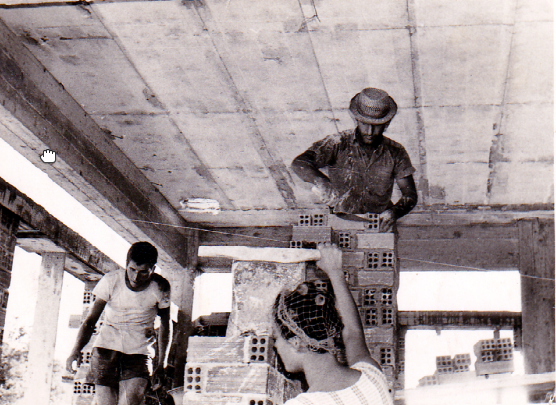Housing People, Shaping Cities
Coordinators:
Konstantina Kalfa (National Technical University of Athens NTUA - Greece)
Panayotis Tournikiotis (National Technical University of Athens - Greece)
Research team:
Mesut Dinler (Politecnico di Torino - Italy)
Milena Farina (Roma Tre University - Italy)
Sergio Martin Blas (Universidad Politécnica de Madrid - Spain)
Anna Paola Pola (WHITRAP Shanghai - China)
Panagiota Pyla (University of Cyprus - Cyprus)
Maurizio Meriggi (Politecnico di Milano - Italy)
Chiara Monterumisi (EPFL - Switzerland)
Martin Søberg (Royal Danish Academy - Denmark)
Olga Touloumi (Bard College, NY – USA)

Background
Housing, town planning and urban design are closely linked and interrelated. Independently, if we are dealing with the Housing Town Planning Act of 1909 in UK or with the Law of Luzzatti of 1903/1908 in Italy and their outcomes -- that is with “state-help” as opposed to “self-help” approaches to the housing problem -- both planning and urban design are equally at stake.
All countries’ theories, policies and approaches to modernize and rationalize urban milieux, from Ildefonso Cerdà to the Modern Movement up to postwar global planners had to deal with Housing as an issue in one form or another. And though the reasons in support to different approaches changed (from functional to social, from politico-ideological to economic, etc.) all housing projects – independently if dealing in early 20th century, with private suburbs, municipal interventions (LCC-Boundary Street Estate), whole districts (Amsterdam Zuid), and “homes fit for heroes”; or in the postwar years, with reconstruction interventions, national and federal housing programs (from Italy to the US) or with the Greek system of antiparochì building of apartments (through property exchange between landowner and developer/contractor) – were equally halfway through town planning and urban design.
Aims
This thematic node aims to deal with the housing projects, that built-up the 20th century cities we are still living in, and intends to do so through mapping, interpreting/re-reading and reconnecting our cities.
- A digital mapping process of well-known and lesser-known built housing projects in big cities throughout the world, will allow not only for comparative understandings never attempted before; but it may also reveal a less “unplanned” growth and a patchwork development out of which new connective elements may emerge.
- Research on housing development is recently growing, both with regard to single cities and nations, and in terms of the legislative, financial, and social aspects, as well as at a comparative level of typologically similar or chronologically parallel developments. Yet, there is still much to be done on an urban design level, particularly when comparative and interdisciplinary research is focusing on mapping these planned housing interventions and acknowledging the importance of their “urban design” dimension in building up local identities and enhancing their heritage value.
- Mapping and interpreting 20th century housing schemes history and genealogy are among our principal aims. It is hoped that this historical and genealogical reading and mapping, will first and foremost reveal the patchworks that planned housing schemes have imprinted to our city’s face (even in absence of an elaborate masterplan) and the patterns of housing development. Secondly, though our aim is not re-designing housing and its policies, comparative readings and research could possibly reveal options of intervention for contemporary planners and policy makers.
National, regional, or transnational groups may be identified around this thematic node that has two major aims: documenting (particularly through mapping) and promoting new research approaches on 20th century housing. A particular goal of the node is to gather (and map) examples of housing around the globe which remain understudied or are lesser known and which can inform contemporary knowledge on the subject, shedding light on new, unexplored aspects (as the GUD Atlas implicitly proposed).
The Greek geographical node has already started working in a similar direction.
Seminar: Cooperative House-Building Practices in the Aftermath of WWII

Abstract
In the aftermath of WWII and during the era of global economic expansion pressing housing demands in Europe and beyond were met by the well-established pre-war policy of housing blocks. Next to these state-led schemes, however, housing was also realized by cooperatives engaged in ad-hoc practices of house-building and real estate exploitation. An indicative example is the case of the Greek postwar city. Rural migrants that vastly increased the Athenian and other Greek cities' population between 1950 and 1970, found themselves transforming the city through a popular contract of exchange of land for new apartments on this land, known as antiparochì. Antiparochì spread the typical modern-inspired mid-rise apartment block, the polykatoikìa, creating a sense of progress, prosperity and modernization, from the level of everyday facilities to the overall image of the city.
This Seminar ‘Cooperative House-Building Practices in the Aftermath of WWII’ gathers researchers who draw on similar house-building practices, which expand our perception of the possible strands and forms of architectural modernity and the subjects that produce and/or consume it. The Seminar seeks to advance beyond theorizations of historical instances of small-scale enterprise and cooperative house-building practices, idealized as spontaneous and bottom-up approaches to housing or, at the antipode, criticized as failed attempts and incomplete transitions to modernity. It, instead, aspires to develop critical stances toward the framing of such examples of home-making which led to different forms of urbanization. The examination of the administrative, political and economic context and the impact of Cold War politics are here crucial for the understanding and comparative examination of the different cases. Our aim, in this seminar, is to critically revisit and investigate patterns of similarities or map out structural differences between the various cities and countries, and between the various periodizations of history.
Programme
3 Nov. 2021 (5pm CET)
Juhana Heikonen (Aalto University – Finland) The Finnish Limited Liability Housing Companies Act in Helsinki and Affordable Housing for the New Urban Working Classes (Link)
10 Nov. 2021 (5pm CET)
Sıla Karataş (École Polytechnique Fédérale de Lausanne – Switzerland), How the Labour Self-Build: Marshall Plan and Workers’ Housing Cooperatives in Turkey (Link)
17 Nov. 2021 (1pm CET)
Maryam Shafiei (University of Queensland – Australia) Agencies of Individuals in Changing Settlement’s Morphology: Small-Scale Cooperative Housing in Rural/Urban Settlements of Tehran (Link)
1 Dec. 2021 (5pm CET)
Ana Esteban-Maluenda (Universidad Politécnica de Madrid – Spain), Celia Castro Gonsales (Universidade Federal de Pelotas – Brazil) A Manifesto of Minimums. The ‘Poblados Dirigidos’ of Madrid as a Laboratory of Modern Social Housing (1955-1967) (Link)
7 Dec. 2021 (5pm CET)
Marija Drėmaitė (Vilnius University – Lithuania) Co-operative Housing in State Socialist Lithuania as a Field of Architectural and Social Experimentation (Link)
8 Dec. 2021 (5pm CET)
Christos Kritikos (National Technical University of Athens – Greece) ‘Urbanophilia’ VS ‘Urban Reconstruction’ Across the Post-War Greek Political Spectrum (Link)
Related Events and Publications


